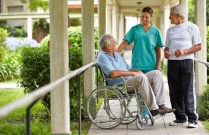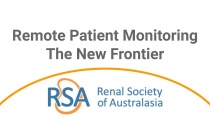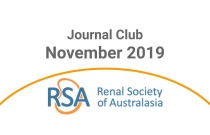Respecting Diversity in Others
Arti Maini, Paramjit Gill
0.25 Hours
A fundamental component in promoting equality and valuing diversity is the ability to treat colleagues, patients, carers and others equitably and with respect. By working through case studies, this session will enable you to reflect on how you might develop and apply this in your practice. This session was reviewed by Suchita Sh....
The Vomiting Child
Judi Strong
This session will investigate the pathophysiology of vomiting and consider the common and more serious causes of vomiting in children. Later, it will explore the issues surrounding the treatment of vomiting in children, including how to recognise when a child is dehydrated and the role of antiemetic medications.
Outbreak of a New COVID 19: What Anaesthetists Should Know
Philip W. H. Peng, Pak-Leung Ho and Susy S. Hota
This course depicts what anaesthetists need to know in response to this outbreak of Covid-19.
Managing Distress During the Dying Phase in Palliative Care
Michael Bramwell
This session discusses heightened distress in patients at the end of life. It offers strategies and suggestions for professionals to identify distress and to provide appropriate support for the patient, relatives and carers during the dying phase - the last few weeks of life. This session was reviewed by Richard Kitchen and last....
Infection Prevention and Control
Deb Shearman
1.00 Hours
Overview; Workplace health and safety responsibilities; Infection transmission and risk factors; Signs and symptoms of common infections for older people; Influenza outbreak response; Gastroenteritis outbreak response; Preventative measures
Mobility and Dexterity
Deb Shearman
0.50 Hours
Overview; Promoting independence; Exercise and activity; Mobility aids and equipment; Dexterity aids and equipment.
Remote Patient Monitoring - The New Frontier - Webinar
Melinda Tomlins on behalf of the RSA
Use of remote monitoring for Automated Peritoneal Dialysis
Journal Club January 2019 - Lupus Nephritis
Renal Society of Australasia
Understanding lupus nephritis, clinical manifestations, classifications, diagnosis and management.
Case Management for Substance Abuse Counselors
Yvonne Martinez, CADC-CS, ICCS, ICADC, NCAC-I, CRPS
6.00 Hours
Case Management for Substance Abuse Treatment: • presents an overview of case management for substance abuse treatment providers. • compares the leading models of case management and describes their various functions as practiced within the substance abuse treatment continuum. • identifies: (1) assessment (2) planning (3) re....
Risk Management and Dual Relationships
Yvonne Martinez, CADC-CS, ICCS, ICADC, NCAC-I, CRPS
3.00 Hours
Risk Management and Dual Relationships reviews how the concept of risk management has been articulated, disseminated and put into practice. It explores its origin, its influence on those in practice, its effect on therapists' behavior, its impact on clinical effectiveness and its effect on the field at large. Highlighted are con....
Communicable Infectious Diseases Among Substance Abusers
Yvonne Martinez, CADC-CS, ICCS, ICADC, NCAC-I, CRPS
9.00 Hours
Communicable Infectious Diseases among Substance Abusers focuses on the particular infectious diseases that occur frequently among treatment populations and have significant medical and socioeconomic consequences for infected persons and others if not recognized and treated. Included are STD discussions and other infectious dise....
Physical and Cognitive Disabilities and Substance Use Disorder
Yvonne Martinez, CADC-CS, ICCS, ICADC, NCAC-I, CRPS
9.00 Hours
Physical and Cognitive Disabilities and Substance Abuse presents an overview of the issues involved in providing substance use disorder treatment for people with coexisting disabilities. It provides important definitions, relevant research findings and a discussion of barriers to treatment for people with coexisting disabilities....
Necrotising Enterocolitis (NEC) in Neonates
Dr. Juli Reynolds PhD
Neo Consult This course has been developed for nurses working in the Neonatal Intensive Care Unit. The course will enable you to develop your performance in practice, theorise practice and develop the knowledge and skills required to be competent in the role of a neonatal intensive care nurse. Target Audience: Neonatal Inte....
Monitoring the Condition of the Fetus During the First Stage of Labour
Dr. Juli Reynolds PhD
Neo Consult This course has been developed for nurses working in the Neonatal Intensive Care Unit. The course will enable you to develop your performance in practice, theorise practice and develop the knowledge and skills required to be competent in the role of the labour room, pre- and postnatal wards. Target Audience:....
Hypoxic Ischaemic Encephalopathy (HIE)
Dr. Juli Reynolds PhD
Neo Consult This course has been developed for nurses working in the Neonatal Intensive Care Unit. The course will enable you to develop your performance in practice, theorise practice and develop the knowledge and skills required to be competent in the role of a neonatal intensive care nurse. Target Audience: 1) Neonata....
Psychotic Disorders
Dr Iravindranth Thyagarajan
0.50 Hours
The aim of this session is to explore the terms psychosis and schizophrenia, as well as to describe the pathophysiology, causes, signs and symptoms and basic therapeutic management of psychosis and schizophrenia.
Pathophysiology of Gastro-oesophageal Reflux Disease Causing Cough
Louise Langmead and Elspeth Potton
0.25 Hours
This session focuses on the pathophysiology of gastro-oesophageal reflux disease in causing cough.
Abdominal pain
Umesh Dashora
0.50 Hours
This session provides the knowledge base required to identify possible causes of abdominal pain and describes an approach to the patient.
Assessing Those with Fluctuating Mental Capacity
Ruth Bradley and Diane Laverty
0.50 Hours
This session explores issues related to the assessment of end of life care needs of someone who has fluctuating mental capacity. This session was reviewed by Amy Proffitt and Christina Faull and last updated in November 2015.
Ankle Part 1: Ankle Sprains, Persistent Ankle Sprain/Pain
Thomas V. Gocke, MS, ATC, PA-C, DFAAPA
0.75 Hours
This video-based activity focuses on general radiographic overview of the ankle, ankle sprains, Syndesmosis injuries, persistent ankle pain, chronic ankle instability, osteochondral injuries of the talus, sinus tarsi syndrome, ankle impingement syndrome, and Peroneal tendon injuries.
Common Injections & Joint Aspirations for MSK Injuries 1
Thomas V. Gocke, MS, ATC, PA-C, DFAAPA
0.75 Hours
This video-based activity focuses on a general anatomy review of the more commonly injected MSK joints/regions such as subacromial space, lateral elbow, Olecranon bursitis and wrist ganglion cysts . We also review the pharmacologic agents commonly used for anesthesia and corticosteroid injections.
ACLS Special Situation: Trauma: Mass Shooting, Gun Wounds
Ms Olympia Resol, RN, MPH, CRNI, CARN
4.00 Hours
Through this course, students will learn how to respond using ACLS when there is Mass shooting or Gunshot wounds.
Chlorohexidine versus saline in reducing the risk of catheter associated urinary tract infection: A cost effectiveness analysis - Journal Club November 2019
Mitchell et al.
A study comparing the cost effectiveness in using chlorhexidine and saline in catheter associated urinary tract infections
Bloodborne Pathogen
Ms Olympia Resol EdDirector
8.00 Hours
Bloodborne Pathogen is a training Course that is good for all - RN's, RT's, LVN's, Allied Health Professionals and all who will come in combat with body fluids in the workplace. This course covers the requirements for annual Bloodborne Pathogen outline by OSHA. Those who complete the training will receive a Bloodborne Pa....
Errors, Cautions and Risks of Drug Administration
Olympia Resol:RN, MPH, CRNI, CARN
1.00 Hours
A nurse is held to certain expectations for administering medications. He must know about its Pharmacology, Drug indication, route, dosage, contraindications, side-effects and adverse reactions.























